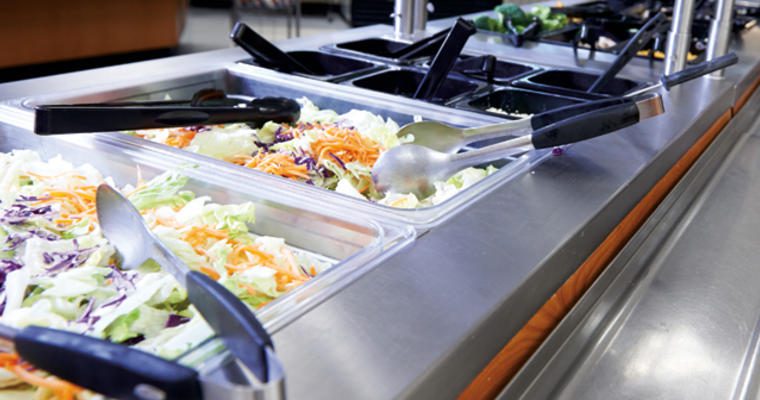The challenge to meet United States Department of Agriculture (USDA) regulations and keep students happy is a balancing act, and serving healthy food that students want to eat is a difficult task. How does a school food service program keep students and the USDA satisfied while keeping costs in check?
Salad bars are a great option for school food service programs striving to meet meal pattern requirements, especially for vegetable subgroups. Used as an entrée or side dish, a school salad bar may include an array of components, giving students the option to create a salad to their liking.
Students like salad bars because they offer variety and allow the students to build their own meals. They encourage healthy eating, too. A recent study shows a majority of schools (78 percent) reported that students took more fruits and vegetables with salad bar implementation.
Serving Healthy School Lunches
There are a few things you’ll want to consider, however, to ensure that you are complying with USDA regulations and meeting requirements:
Meet Your Serving Size Minimums
To ensure students take at least the minimum required portion size, consider pre-portioning food so that the correct amount of each item is taken. Or, teach students what an appropriate portion looks like by posting pictures of correct portions of each item.
Location of the Salad Bar is Important
Salad bars should be placed before the Point of Service (POS). If this is not possible, a system must be in place to ensure each student selects a reimbursable meal. Un-monitored salad bars after the POS are considered extra food by the USDA and do not count toward the reimbursable meal. Further, to ensure that each student’s selections from the salad bar meet the required portions for a reimbursable meal, schools must identify reimbursable meal items near the beginning of the serving line.
Control Costs & Waste By Setting a Standard Recipe
Consider creating a standardized recipe for your salad bar. Standardized recipes promote consistent food quality, predictable yield, help control food costs, and allow for accurate nutrient analysis. Measure the amount of each ingredient you place on the salad bar on a typical day and the amount of food left at the end of meal service to determine how much of each ingredient should be used in your recipe.
School Salad Bar Safety
Control contamination from all sources and maintain proper food temperature. For salad bars in K-5 schools, all food should be pre-wrapped or food should be served to students based on the choices they make. View more information from the USDA on how to properly implement a salad bar in your school.











